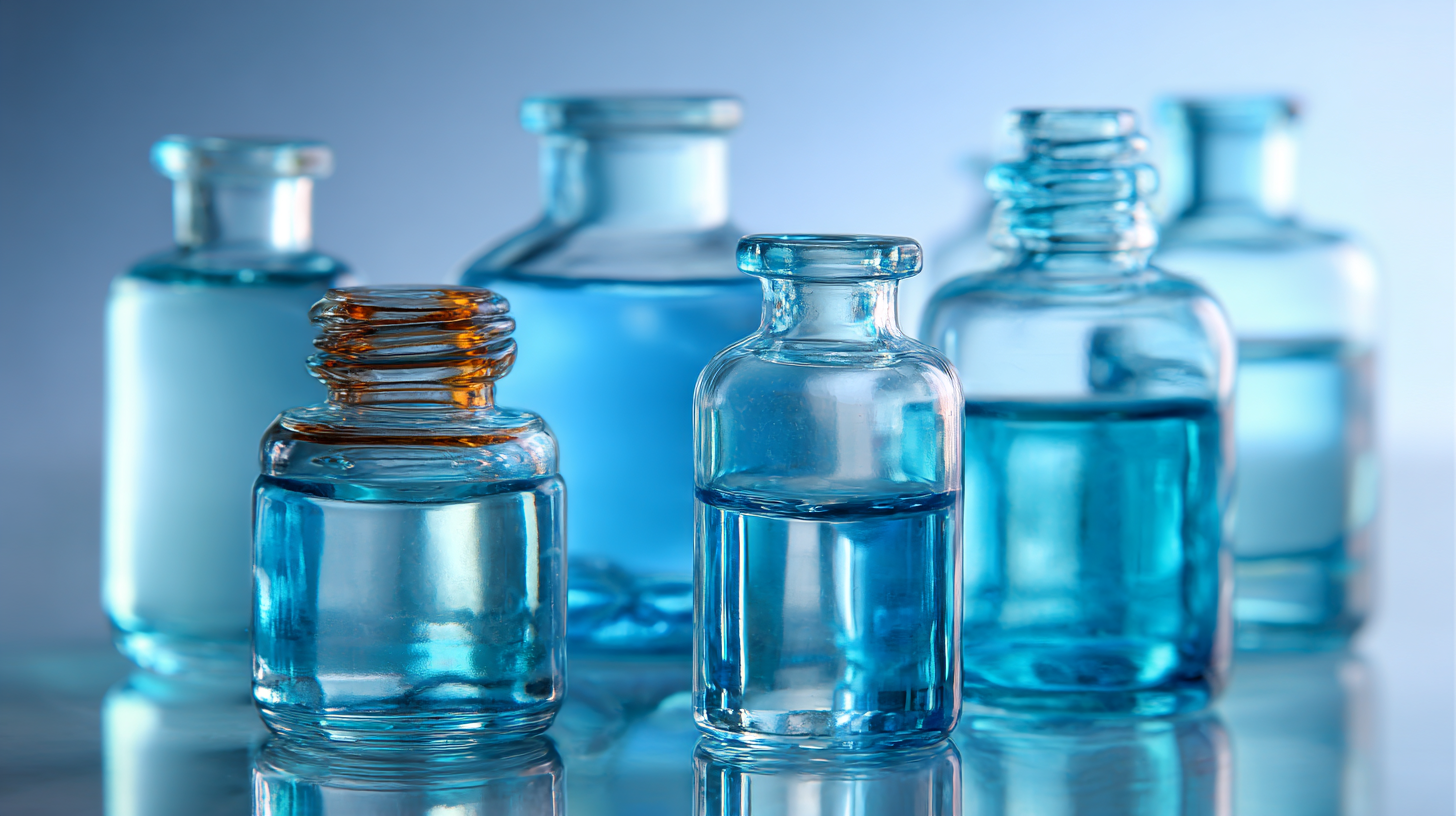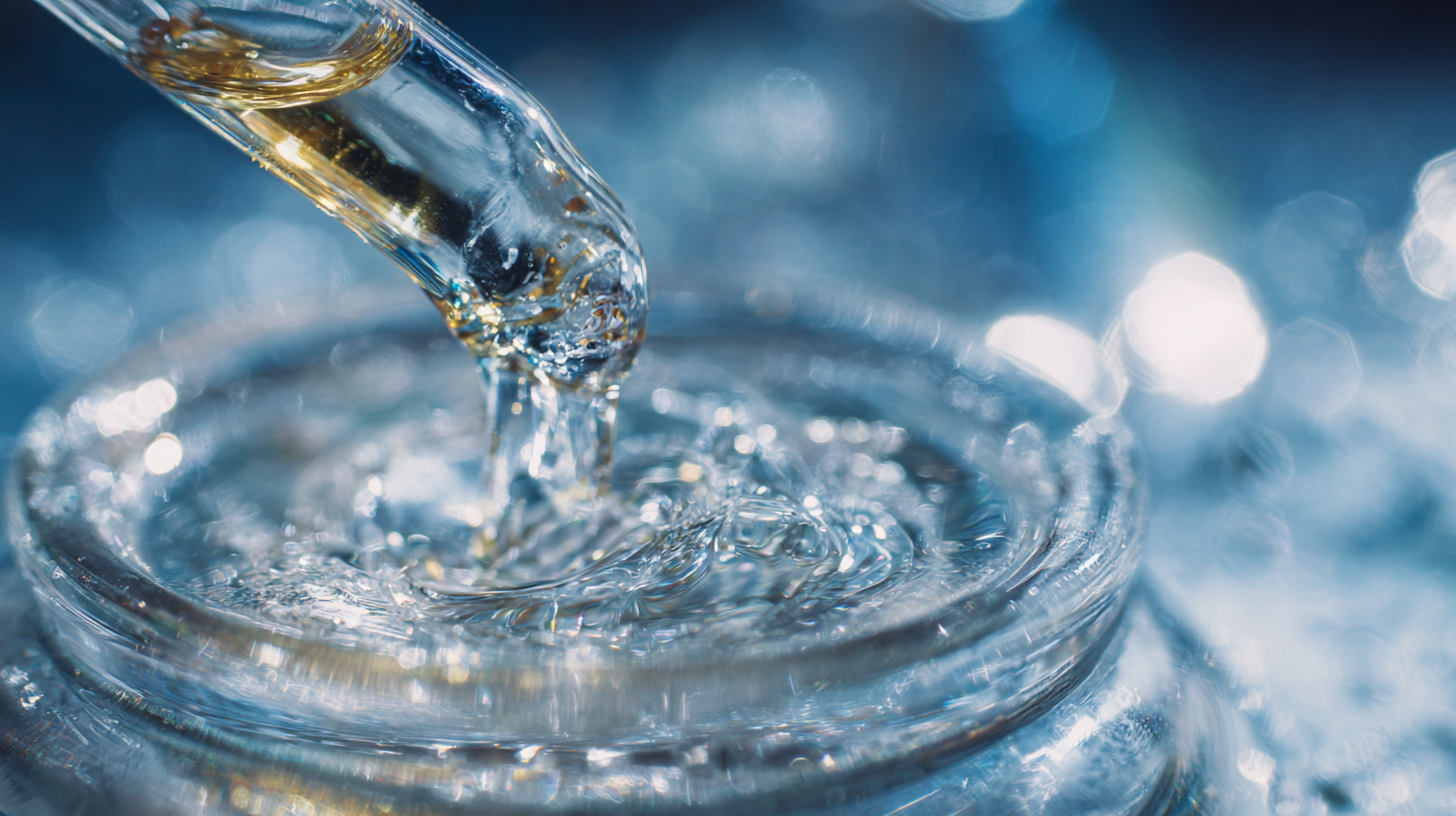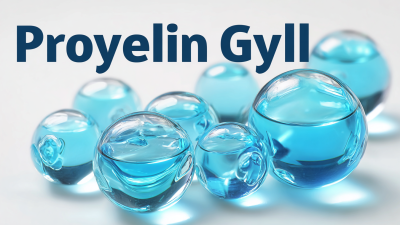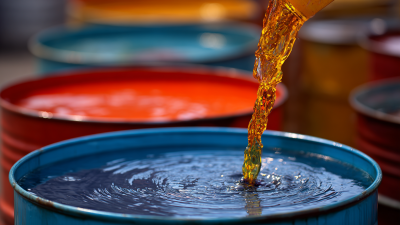10 Essential Tips for Using Propylene Glycol Safely in Everyday Products
In recent years, Propylene Glycol has emerged as a staple ingredient in a wide range of everyday products, from food and cosmetics to pharmaceuticals and industrial applications. As our understanding of its safe use continues to evolve, it becomes increasingly important to follow best practices to ensure both efficacy and safety. Dr. Emily Thompson, a leading expert in chemical safety and additive research, emphasizes the significance of proper usage: "Understanding the properties and applications of Propylene Glycol is crucial for leveraging its benefits while minimizing any associated risks."
With the growing demand for products containing Propylene Glycol, the need for clear guidelines has never been more pressing. Consumers and manufacturers alike must navigate the complexities of ingredient safety to make informed choices. In this context, the "10 Essential Tips for Using Propylene Glycol Safely in Everyday Products" aims to provide practical guidance for achieving optimal results. By incorporating these tips, individuals and businesses can enhance their understanding of Propylene Glycol, ensuring that they utilize it responsibly and effectively in their products.
As we delve into the top ten recommendations, we invite you to explore how these insights can help foster a safer environment for both consumers and manufacturers, promoting a balanced approach to utilizing Propylene Glycol in our daily lives.

Understanding Propylene Glycol: Its Uses and Safety Concerns
Propylene glycol is a versatile compound commonly used in various products, from food and pharmaceuticals to cosmetics and personal care items. It acts as a humectant, solvent, and preservative, which makes it valuable in enhancing product texture and extending shelf life. However, understanding its safety profile is essential, as concerns regarding its potential irritation and toxicity often arise.
To ensure safe use, consider these essential tips: always check label ingredients for propylene glycol content, especially if you have sensitive skin or allergies. When using personal care products featuring this compound, perform a patch test to avoid any adverse reactions. Additionally, moderation is key; while propylene glycol is generally recognized as safe, using it excessively in homemade cosmetic formulations can lead to skin irritation. Adhering to these recommendations will help you enjoy the benefits of propylene glycol while minimizing risks.
Choosing Quality Products: What to Look for When Purchasing Propylene Glycol
When purchasing products containing propylene glycol, it's essential to choose quality options to ensure safety and effectiveness. Look for products that clearly list the ingredients, emphasizing the source and purity of propylene glycol. Products certified by reputable organizations, such as the USDA or FDA, can offer additional peace of mind regarding safety standards.
Another important tip is to check for additional certifications or tests related to the product. Some brands provide third-party testing results, confirming that their propylene glycol is free from contaminants. This transparency not only reflects the quality of the product but also builds consumer trust.
Finally, consider the concentration of propylene glycol in the products you select. It's recommended to choose products with concentrations that align with safety guidelines for intended use, whether in cosmetics or food items. High-quality brands often provide detailed usage instructions, which can further guide your purchasing decisions, ensuring you use propylene glycol safely in your everyday life.
Proper Handling and Storage: Guidelines for Safe Use at Home
When using propylene glycol in everyday products, proper handling and storage are crucial for ensuring safety. Always read labels and product instructions carefully to understand the recommended uses and limitations of products containing propylene glycol. It’s essential to use gloves and avoid skin contact when handling concentrated forms of this chemical, as it can cause irritation. Ensure that your workspace is well-ventilated to minimize inhalation of vapors, which can be harmful in poorly ventilated areas.

Storage plays a significant role in maintaining the safety of propylene glycol products. Keep them in a cool, dry place away from direct sunlight and heat sources, as excessive temperature changes can affect the integrity of the product. Store in original containers with tightly sealed lids to prevent spills and contamination. Additionally, keeping these products out of reach of children and pets is vital, as ingestion, even in small amounts, can pose health risks. Regularly check for any signs of leakage or damage to containers, and properly dispose of any expired or unused products according to local regulations.
Recognizing Allergic Reactions: Signs and Symptoms to Watch For
Propylene glycol, widely used in food, cosmetics, and pharmaceuticals, can sometimes trigger allergic reactions in sensitive individuals. Recognizing the signs and symptoms is essential for ensuring safety in everyday product use. Common allergic reactions may include skin irritation, rashes, or even severe reactions like difficulty breathing. A study published in the Journal of Allergy and Clinical Immunology noted that approximately 3% of the general population may be sensitive to propylene glycol, emphasizing the importance of awareness regarding its presence in various products.

When using products that contain propylene glycol, it's vital to perform a patch test if you're trying a new product. Apply a small amount to a discreet area of your skin and monitor for any adverse reactions over 24 hours. If you notice redness or itching, it’s best to discontinue use immediately. Additionally, always read ingredient labels carefully, as propylene glycol can be listed under various names such as E1520 or 1,2-Propanediol. Awareness of these terms can help avoid unexpected exposure to allergens.
In cases of suspected allergic reactions, particularly if accompanied by difficulty breathing or swelling, seek medical attention promptly. Keeping a list of products containing propylene glycol can also be beneficial, allowing you to track any potential reactions across different items. By understanding the risks and practicing caution, you can safely enjoy the benefits of products that contain this commonly used ingredient.
Environmental Impact: Safe Disposal Practices for Propylene Glycol Products
When it comes to the environmental impact of propylene glycol, proper disposal practices cannot be overstated. As it is commonly found in various everyday products—from food items to skin care—it is essential to minimize its environmental footprint. Many consumers might not be aware that improper disposal can lead to the contamination of soil and water, prompting the need for responsible usage and disposal methods. In this light, safe disposal practices involve ensuring that any leftover products containing propylene glycol are treated at designated waste facilities rather than being discarded down the drain or in regular trash.
Innovative recycling strategies are emerging to address the global challenge of waste management, particularly concerning plastic products. With recent advancements in converting recycled PET into various formulations, including polyester resins, it's vital to consider how these methods can be applied to propylene glycol disposal. Equally effective is the development of biodegradable alternatives and bio-based processes, such as utilizing glycerol as a source for propylene glycol through hydrogenolysis. By adopting a comprehensive approach to waste, including the recycling of propylene glycol products, communities can significantly lower harmful emissions and contribute to a more sustainable future.
Related Posts
-

Global Trust in Chinese Manufacturing Consistent Quality in Best Propylene Glycol
-

Navigating Export and Import Certifications for the Best Propylene Glycol in Today's Market
-

Experience Reliable Quality: Best Propylene Glycol from China for Global Buyers
-

The Future of Propylene Glycol in Sustainable Manufacturing
-

Exploring the Versatility of Propylene Glycol: From Food Additive to Industrial Powerhouse
-

Understanding Industry Standards for Best Propylene Glycol Production and How to Choose the Right Grade





